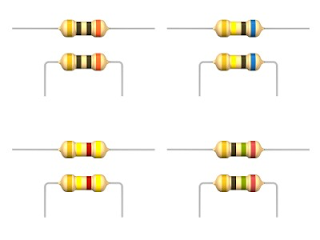 |
| Different types of Resistance Photo Credit - physics.tutorvista.com |
It is defined as the property of a substance due to which it opposes the flow of current (i.e. electrons) through it resistance is denoted by capital letter R and its symbol is
 |
| Resistance Symbol |
Resistance is one of the basic element of an electric circuit . The practical resistance is called a resistor and its unit is "ohm" () .A conductor is said to have a resistance of one ohm if it permits one ampere current to flow through it when one volt is applied across its terminals.
Metals , acids and salts are good conductor of electricity due to presence of a large number of free or loosely attached -electrons in their atoms. Hence they have a very large resistance. Resistance is a passive element and hence dissipates power in the form of heat. The power dissipated by a resistance can be given as
=i/Ri OR v/Rv
Laws of Resistance :-
The resistance R offered by a conductor depends on the following factors :
- It varies directly as length l of conductor.
- It varies inversely as the cross sectional area A of the conductor.
- On the nature of material.
- On the temperature of the conductor.
R ∝l/A
R = Ρl/A
where P is proportionality constant or specific resistance or resistivity.



nice my friends
ReplyDeletenice my friends
ReplyDeleteThank you for your support.
ReplyDelete